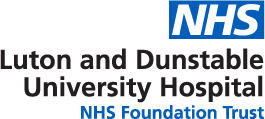By continuing to use the site, you agree to the use of cookies. You can find out more by following this link - Close
Most (90%) breast lumps are not cancerous, but if you notice a lump, or any other changes to your breasts then you should report it to your GP, who may then decide to refer you to the Breast Unit for a one stop clinic appointment.
Find out more on examining your own breasts here.
Fibroadenomas
Fibroadenomas are common harmless breast lumps that can occur at any age but are most common in younger women; they do not increase the risk of breast cancer. Often they cannot be felt and are picked up incidentally on a mammogram or ultrasound. If they cause a lump that can be felt this is often smooth and very mobile in the breast. Once a fibroadenoma has been diagnosed there is not usually any need for further treatment and most will get smaller or stay the same size over time. Occasionally they will become larger or have unusual features that may make us recommend removal, and you can ask to have a fibroadenoma removed if it is concerning you. If you notice any lump in your breast, even if you think it is a fibroadenoma, you should report it to your GP, as a definite diagnosis cannot be made without you being seen in a breast clinic.
Breast Cysts
Breast cysts are collections of fluid in the breast; they are common and harmless and do not increase the risk of breast cancer. They often occur around the time of the menopause and can be recurrent in some women. Sometimes they can rapidly enlarge and become painful or infected. Once diagnosed nothing needs to be done about them, but they can be drained simply with a needle if you wish or we may recommend this if the appearance is unusual and we need to be certain of the diagnosis. If you notice a breast lump and think it is a cyst, even if you have had cysts in the past, please report it to your GP as the only way of being certain that it is only a cyst is to be seen in the Breast Clinic.
Breast Abscess
A breast abscess is a collection of pus, which may result in redness of the skin and the feeling of a lump. This is most commonly seen in women who are breast feeding (lactational breast abscess), but can sometimes be seen in other women, particularly if they smoke (see periductal mastitis). A breast abscess will need an ultrasound test to diagnose it, and at the same time it may be possible to drain the pus with a needle and syringe which will help it to resolve more quickly.
Periductal Mastitis
This is a condition where there are often repeated episodes of infection and inflammation close to the nipple. It is troublesome and can lead to collections of pus (abscesses), nipple inversion and fistula formation (an abnormal communication between the breast tissue and the skin), but it does not increase the risk of breast cancer. Most cases are seen in women who smoke and you will be advised to stop smoking to avoid repeated episodes. You may need to have a number of scans and drainage if there is pus. Occasionally surgery is required, but this is a last resort and often is not successful at preventing recurrence.

